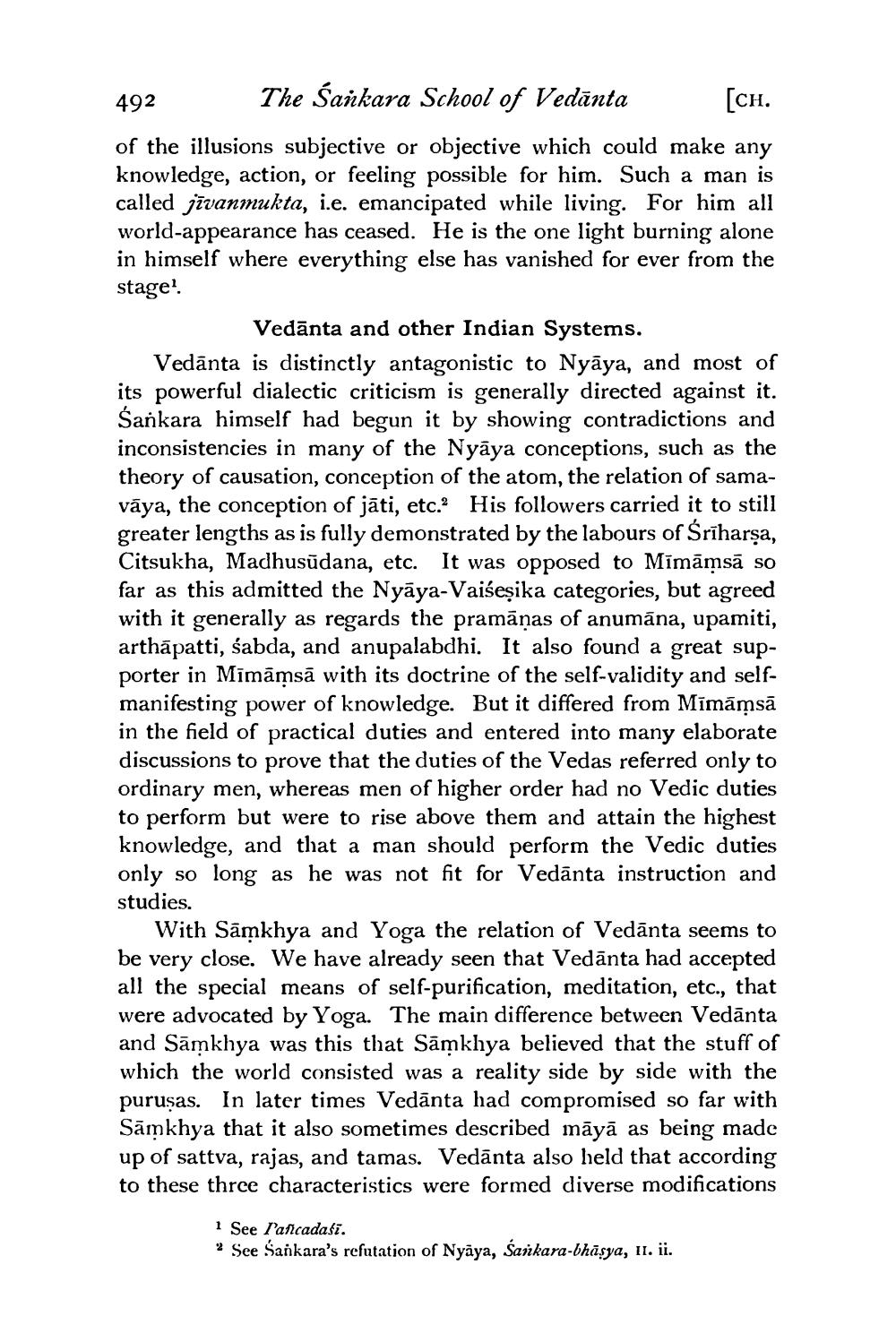________________
492
The Sankara School of Vedanta
[CH.
of the illusions subjective or objective which could make any knowledge, action, or feeling possible for him. Such a man is called jivanmukta, i.e. emancipated while living. For him all world-appearance has ceased. He is the one light burning alone in himself where everything else has vanished for ever from the stage1.
Vedanta and other Indian Systems.
Vedanta is distinctly antagonistic to Nyāya, and most of its powerful dialectic criticism is generally directed against it. Śankara himself had begun it by showing contradictions and inconsistencies in many of the Nyaya conceptions, such as the theory of causation, conception of the atom, the relation of samavaya, the conception of jāti, etc. His followers carried it to still greater lengths as is fully demonstrated by the labours of Śrīharṣa, Citsukha, Madhusudana, etc. It was opposed to Mīmāmsā so far as this admitted the Nyaya-Vaiśeşika categories, but agreed with it generally as regards the pramāņas of anumāna, upamiti, arthapatti, sabda, and anupalabdhi. It also found a great supporter in Mīmāmsā with its doctrine of the self-validity and selfmanifesting power of knowledge. But it differed from Mimamsā in the field of practical duties and entered into many elaborate discussions to prove that the duties of the Vedas referred only to ordinary men, whereas men of higher order had no Vedic duties to perform but were to rise above them and attain the highest knowledge, and that a man should perform the Vedic duties only so long as he was not fit for Vedanta instruction and studies.
With Samkhya and Yoga the relation of Vedanta seems to be very close. We have already seen that Vedanta had accepted all the special means of self-purification, meditation, etc., that were advocated by Yoga. The main difference between Vedānta and Samkhya was this that Samkhya believed that the stuff of which the world consisted was a reality side by side with the purusas. In later times Vedanta had compromised so far with Samkhya that it also sometimes described māyā as being made up of sattva, rajas, and tamas. Vedanta also held that according to these three characteristics were formed diverse modifications
1 See l'ancadasi.
2 See Sankara's refutation of Nyaya, Sankara-bhāṣya, II. ii.




